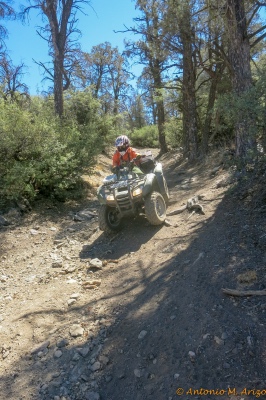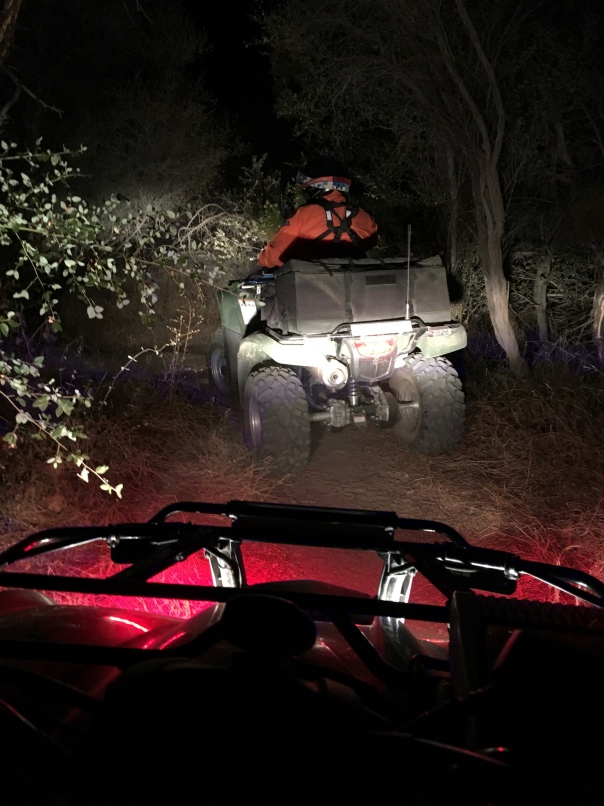On our Search and Rescue Team, we are required to have at least one day of training per month. The day usually begins around 7am and ends around 6pm. Every training usually covers one main component of our repertoire of varied skills through a Scenario. This means on any given training, our Training Scenario could cover Searching for a subject, Navigating to the subject or subject’s last know location using map coordinates or GPS, Tracking a subject, simulating a Medical emergency, setting up Rope Rescue Systems to stabilize or evacuate a subject, and debriefing. Our September monthly training was scheduled to focus on Offroad skills and to allow us to reinforce our regular protocols such as radio communications, Command and Control (Administratively running a search) and get some Area Familiarization of the Gorman/Hungry Valley area.
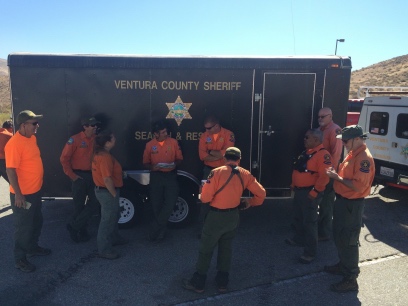
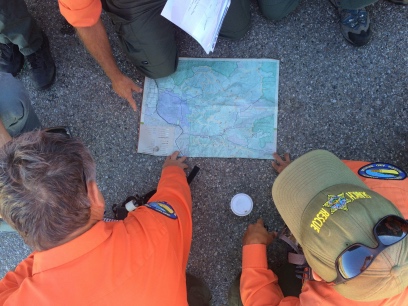
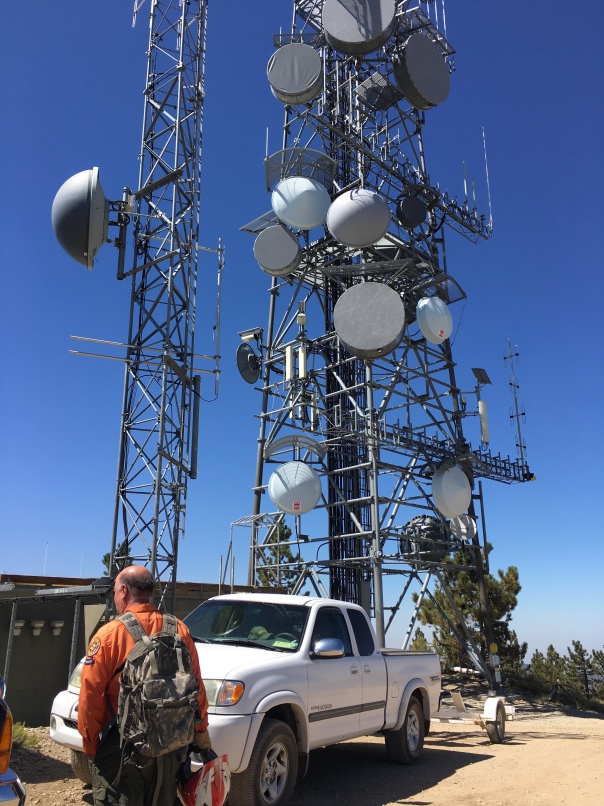
We started at 7am, meeting at the Sheriff’s Station to coordinate trucks and gear, and headed north to Gorman, CA. On site, we began with a simple missing person scenario, so first we needed to set up our Command Post (CP), set up communications, and send out teams to find the subject’s last known position (LKP). Assignments were quickly issued for 2-3 person teams on motorcycles and quads to find the subject’s vehicle in the Hungry Valley Offroad Vehicle area also known as Hungry Valley SVRA. This area offers about 19,000 acres and over 130 miles of scenic trails for motorcycle, All-Terrain Vehicles (ATV), dune buggies and 4x4 vehicles. Elevations at Hungry Valley range from 3000 to 6000 vertical feet. Adjacent to one of the campgrounds is a 10 acre area developed to allow 4 wheel drive enthusiasts to practice with their vehicles with eight man made features that replicate conditions and terrain found throughout California’s backcountry, with a Mini track and Motorcycle track.
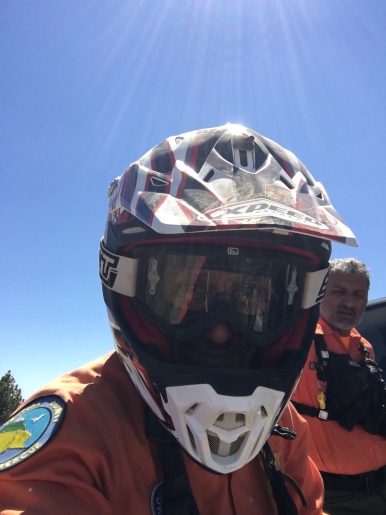
I am a licensed motorcycle rider, and have been certified to use the Sheriff’s Quads (four wheel drive ATV’s), but could always use more hours of experience in offroad settings. I was assigned with 2 other teammates and we headed off to our initial assignment on our quads. After a couple hours of riding, one of the other teams had found the subject’s vehicle and we were called to check some footprints that were spotted on a nearby trail. A call went over the radio that one of our team motorcycles was having mechanical difficulty and was needing to be physically extricated from a difficult and technical trail. I was one of the nearest quads, so I made my way down the rocky trail to help get the bike out. It took us about 20 minutes, but we were able to use some old webbing to tow the bike out to the nearest trailhead accessible to a truck. We were able to get a truck with a trailer to that site and load the downed bike.
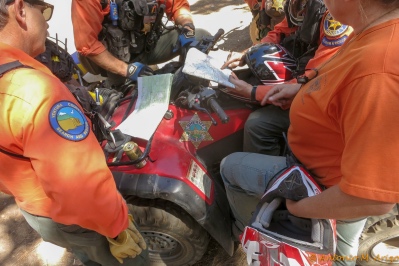
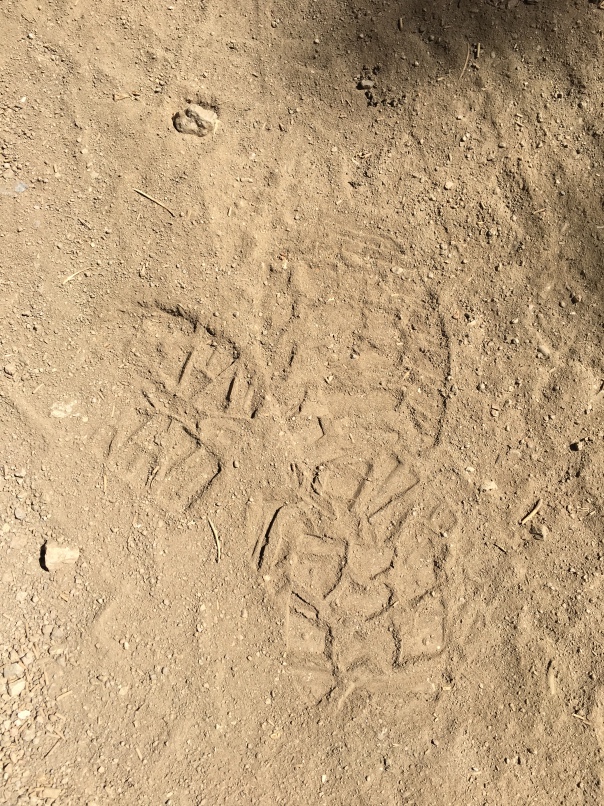
As I was converging on another location that might have some other clues about our missing person, one of my teammates went down on his motorcycle . When I had he gotten to him, he was showing signs of an altered mental status and partial loss of consciousness. It didn’t help that it was dry and hot (about 90 degrees Fahrenheit), and we had all been riding pretty hard for the last few hours. One of the other team members went through the process of assessing him and we made the decision to have him be checked out by a paramedic. I was then tasked with having to ride his motorcycle out, then come back to that location and ride my quad out. The day was turning into a full day of varied technical offroad skills!!
We finished the training exercise and around 5pm headed back to the station to clean and put away equipment, as is our usual End-of-training procedures. As we finished pulling the cleaned trucks into their normal parking slots, we got word that there was a lost hiker on Sandstone Peak. It was now about 7pm and we quickly assembled a plan. First, two-2 person “Hasty” teams were deployed to start narrowing down the area where the subject might be located. I was tasked with another teammate to load two quads and enter the area through the Sandstone Peak Trailhead, come over the summit and down towards Echo Cliffs. A second team was inserted on foot at the Mishe Mokwa Trailhead to check Balance Rock and surrounding areas. Within 30 minutes, the team on Mishe Mokwa was able to make voice contact with the subject, but it took us another 2 hours to access him in the dark. He was unhurt and ambulatory so the foot team escorted him out. By the time the subject was finally off trail, it was almost 2am.
In all it was a 21 hour day, of which I spent about 12 hours on an off-road vehicle. For some, it may seem that riding a motorcycle or quad is a very sedentary activity, which is usually the case when traveling on a road or well maintained trail. When working on a technical trail, off the beaten path, with a variety of obstacles and having to judge approach lines and angles, riding becomes a much more mental and upper body/core activity. Needless to say, at the end of the morning we were tired and a bit mentally drained from having to suddenly put in another 8 hours after training. I think this is one of the real reasons why this job is not for everyone. Not only is SAR a physical and technical challenge, I can only think of a handful of endeavors where people will willingly put in another full workday after an already tiring 10 hour shift. Actually, this additional time is more often, the norm. Team members know full well, that the monthly training is just the minimum time commitment that is expected. When we signed on, we knew that Call-Outs are random, and often they are long, drawn out operations. But of consolation to me, is that I get to spend that time with some of the best human beings I have ever known, in some of the most beautiful back country spaces, doing some incredibly adventurous, albeit altruistic things.
